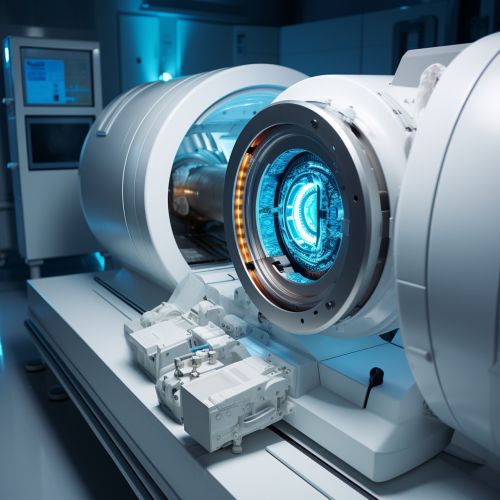Advances in Nanoscale Magnetic Resonance Imaging (MRI)
Introduction
Nanoscale Magnetic Resonance Imaging (MRI) represents a significant advancement in the field of MRI. This technology has evolved from the conventional MRI, which is widely used in medical imaging, to a more sophisticated tool capable of imaging at the nanoscale level. The development of nanoscale MRI has opened up new possibilities in various scientific fields, including nanotechnology, biomedical engineering, and material science.


Development of Nanoscale MRI
The development of nanoscale MRI has been driven by the need for higher resolution imaging techniques. Traditional MRI machines have a resolution limit of about 1 millimeter, which is sufficient for many medical applications but inadequate for studying structures at the nanoscale level. The advent of nanoscale MRI has been made possible by advances in quantum mechanics, superconductivity, and nanofabrication techniques.
Principles of Nanoscale MRI
Nanoscale MRI operates on the same basic principles as conventional MRI. It uses a powerful magnetic field to align the nuclear magnetization of hydrogen atoms in water molecules within the sample. This alignment is then disturbed by a series of radio frequency pulses, causing the hydrogen atoms to emit signals that can be detected and used to construct an image of the sample.
However, nanoscale MRI differs from conventional MRI in several key ways. First, it uses much stronger magnetic fields, typically in the range of tens of Tesla. This allows for much higher resolution imaging, with the ability to resolve structures as small as a few nanometers. Second, nanoscale MRI uses specialized detection techniques, such as Magnetic Resonance Force Microscopy (MRFM), to detect the extremely weak signals emitted by the hydrogen atoms.
Applications of Nanoscale MRI
Nanoscale MRI has a wide range of potential applications. In the field of nanotechnology, it can be used to image and characterize nanoscale structures and devices. In biomedical engineering, it can be used to study cellular structures and processes at the nanoscale level, potentially leading to new insights into disease mechanisms and treatments. In material science, it can be used to study the properties of materials at the nanoscale level, providing valuable information for the design of new materials and devices.


Challenges and Future Directions
Despite its potential, nanoscale MRI faces several challenges. The high magnetic fields required for nanoscale imaging can be difficult to generate and maintain, and the detection of the weak signals emitted by the hydrogen atoms requires highly sensitive equipment and techniques. Furthermore, the interpretation of the images produced by nanoscale MRI can be complex, requiring sophisticated computational methods.
However, ongoing research and development efforts are addressing these challenges, and the future of nanoscale MRI looks promising. Advances in superconductivity and nanofabrication techniques are expected to lead to more powerful and stable magnetic fields, while improvements in detection techniques and computational methods are expected to enhance the sensitivity and interpretability of nanoscale MRI images.
